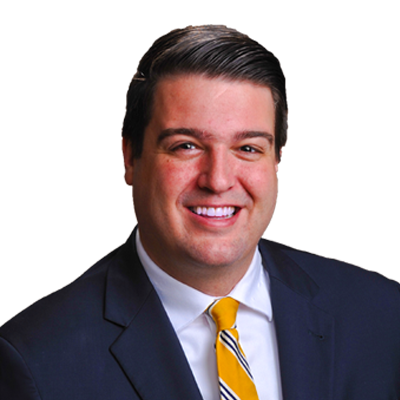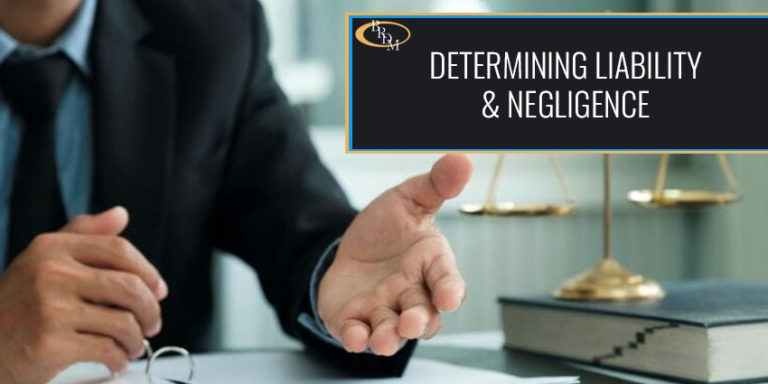Establishing liability is a crucial part of any successful personal injury claim. Read on to find out more about how to determine liability and negligence in a personal injury case and how Florida handles shared fault.
Table of Contents
- What is Liability?
- Establishing Personal Injury Liability
- Breaking Down the Elements Negligence
- Who Determines Liability in a Personal Injury Case?
- Who Is Liable for Personal Injuries?
- What if There Is More Than One Liable Party?
- Three Types of Liability in Personal Injury Cases
- Examples of Liability in Different Personal Injury Cases
- Contact a Florida Personal Injury Lawyer Today
What is Liability?
Liability in legal terms means responsibility and it’s the starting point for all personal injury claims. If someone else was negligent, careless, reckless, or did something wrong to harm you, they can be held liable. Likewise, if a business or corporation is at fault for causing you a personal injury or property damage, they can be liable for your losses.
Any personal injury victim who wishes to pursue financial compensation must establish clear liability to proceed with a personal injury claim. This is where a Florida personal injury attorney can be invaluable to your case, often spelling the difference between the success or failure of a claim.
Establishing liability involves proving that the at-fault party was negligent. That means the person or business in question did something wrong or failed to uphold a duty of care owed to the injury victim. Then the injury victim must prove their injuries were a direct result of the at-fault party’s negligence.
Personal Injury Claims Involve Civil Liability
Personal injury claims involve the plaintiff making a claim against the defendant for civil liability. Civil liability can apply to different accident cases such as:
- Car accidents
- Pedestrian accidents
- Dog bites and animal attacks
- Golf cart accidents
- Motorcycle accidents
- Product liability (defective products)
- Boating accidents
- Burn injuries
- Medical malpractice
- Commercial vehicle accidents
Personal injury victims often seek financial reparations through the at fault party’s insurance company. When you clearly establish liability, you’ll have an easier time dealing with insurance companies. Even when liability is clear, insurance companies often try to offer injury victims very low settlements that are less than the fair value of their actual losses. The good news is that the job of an attorney is to ensure injury victims do not get unfairly cornered or shorted by insurance companies.
Furthermore, if proving liability is challenging, an attorney can help you clarify and establish all liability parties for your claim purposes. Liability can become tricky if more than one party is responsible for your injuries. When liability is unclear, the insurance company is much more likely to put up a fight before paying anything to the claimant.
Establishing Personal Injury Liability
As the claimant in a personal injury case, you have the burden of proof. Meaning, it’s your responsibility to prove the other party was negligent and should consequently pay for your damages. In most personal injury cases, you must first prove their negligence in order to establish liability.
How Do You Establish Liability?
Most people and businesses have a legal obligation (duty of care) to act reasonably and take precautions to avoid causing harm to others. Liability is applicable when a person or business fails to uphold their duty of care and harms or injures someone as a result.
In a personal injury case, the term “reasonable” is a vital term that is often a matter of interpretation. An attorney can help show that the at fault person did not act reasonably and therefore is liable for your injuries. In some instances,someone might get injured after signing a liability waiver. A waiver usually protects businesses from legal responsibility, thus barring the injury victim from bringing a successful personal injury claim. However, if you have any questions, it’s best to speak with a knowledgeable personal injury attorney who can give you the correct answers regarding your legal rights.
Proving Fault in a Personal Injury Claim
You need to collect evidence to prove fault in a personal injury case. Evidence can come in many forms, including medical documentation, pictures, witness statements and testimonies, and video surveillance footage. In a car accident personal injury case, you might also use police reports or traffic citations as evidence. These would help show that the at fault driver breached their duty of care (to avoid harming others) and thus caused a crash.
To demonstrate the extent of your injuries, you might also use medical reports, doctors notes, or any other relevant documentation that can show the scope of your injuries. With this in mind, remember that it’s imperative to tell all the details of the accident and your injuries to your medical care provider. That way you will have stronger records that link the accident to your injuries.
Breaking Down the Elements Negligence
Negligence has four main components which are all necessary to demonstrate to solidify your claim.
- The defendant owed a duty of care – people and businesses have a legal responsibility known as a duty of care to prevent injuring others. For example, all motorists who share roadways owe each other a duty of care, so everyone has the responsibility to drive safely and cautiously. In the same way, businesses that provide goods and services have an obligation to prevent harm or injury to their customers.
- The defendant breached their duty of care – the plaintiff must exhibit proof that the defendant breached their duty of care. A breach of duty of care usually involves a wrongful or careless act.
- The defendant’s breach of duty was the direct cause of your injuries – as the injured party, you must prove the breach of duty caused your injury.
- The plaintiff suffered damages and losses as a result of the defendant’s actions – you must also provide evidence that their breach of duty led to your injuries
Who Determines Liability in a Personal Injury Case?
After you file a claim for a personal injury, an insurance adjuster will usually review your claim to make a determination of liability before making a settlement offer. They will usually put up a fight and do everything they can to avoid liability. This is why it’s important to have a skilled attorney on your side.
In the case of a car accident personal injury claim, the insurance companies will assess the police report and other forms of evidence to make a determination. If the insurance company refuses to cooperate, it may be necessary to go to trial to seek damage compensation. While most cases are settled out of court, if it is necessary to go to court, a judge or jury will decide on a verdict. Your attorney would represent you in court and present your case to the judge or jury.
Who Is Liable for Personal Injuries?
Some possible parties that can be liable in personal injury claim include:
- Negligent motorists
- At fault drivers
- Employers if their employee was negligent
- Manufacturer, distributors, wholesalers, or retailers for defective products
What if There Is More Than One Liable Party?
Sometimes, there can be more than just one liable party. For example, if you get into a multi-car pileup accident, there may be multiple liable drivers. The insurance company might even try to claim that you are partially responsible for contributing to the accident. In that case, your compensation amount could get decreased depending on how much fault you have in the accident.
For this reason, many people feel more secure about their claim by working with an experienced attorney who knows how to fight back when insurance companies try to point fingers and place more blame on the injury victim than what’s fair or true. What they ultimately want to do is reduce the payout owed to you.
Florida Now Uses Modified Comparative Negligence Laws
Before March 2023, Florida used pure comparative negligence laws, allowing personal injury victims to seek damages no matter how much fault they have. However, under new modified comparative negligence laws, plaintiffs can only seek compensation if they are less than 50% responsible for the accident.
Three Types of Liability in Personal Injury Cases
There are generally three different types of liability that are relevant to personal injury cases:
1. Liability for Negligence – businesses or individuals can be liable for injuries if they are negligent (which involves breaching a legal duty to prevent harm). Car accidents are often negligence-based personal injury claims since all drivers have a duty of care to prevent injuring other motorists.
2. Liability for Intentional Acts – liability can also arise if someone intentionally causes your injuries
3. Strict Liability – strict liability applies to certain cases where the injury victim does not have to prove fault in order to seek reparations. Strict liability in Florida applies to dog bites and defective products.
Examples of Liability in Different Personal Injury Cases
- Motor Vehicle Collisions – a driver who causes an accident by disobeying traffic laws, reckless driving, drunk driving, distracted driving, or other types of negligent driving behaviors can be held liable for another motorist or pedestrian’s injuries.
- Dog Bites and animal attacks – dog owners are strictly liable for their pets in Florida, with a few exceptions, such as if a person is trespassing on the owner’s property.
- Defective products – a manufacturer or distributor who sells defective or dangerous products is strictly liable for any consumer injuries. For example, earlier this year, Ezracare recalled defective eye drops that caused infection, vision loss, and other damages. The company is now facing legal charges for defective products that harmed consumers.
Contact a Florida Personal Injury Lawyer Today
If you have any further questions regarding your personal injury case, it’s free to call today and speak with an experienced personal injury lawyer. We offer free initial case review so you have nothing to lose from getting a no-risk, no-obligation case assessment.



